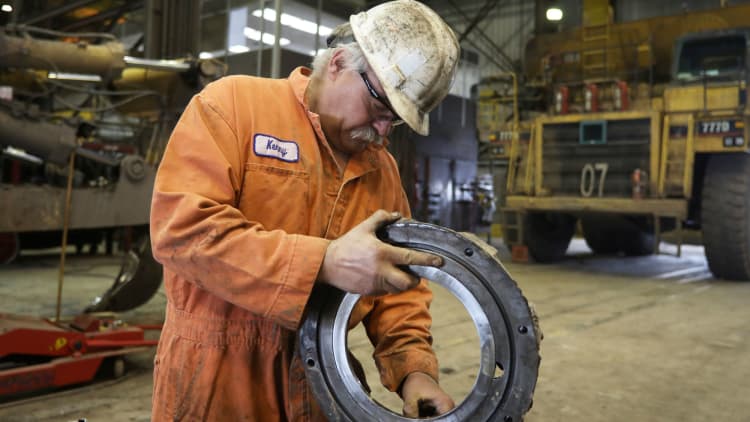
The economy added 313,000 jobs in February, crushing expectations, while the unemployment rate remained at 4.1 percent, according to a Labor Department report Friday that could help quell inflation fears.
Economists surveyed by Reuters had been expecting nonfarm payroll growth of 200,000 and the unemployment rate to decline one-tenth of a point to 4 percent.
An increase in the labor force participation rate to its highest level since September helped keep the headline unemployment number steady, as the number of those counted as not in the workforce tumbled by 653,000 to just over 95 million.
The total counted as "employed" in the household survey surged by 785,000 to a record 155.2 million.
A separate measure that takes into account those out of the workforce and the underemployed — sometimes referred to as the "real" unemployment rate — held steady at 8.2 percent.
Stocks surged following the report, with the Dow industrials up 375 points Friday afternoon after being slightly negative before the news.
"The underlying economic growth is quite strong, but there's no real pressures from a wages and inflation standpoint," said Greg Peters, senior investment officer at PGIM Fixed Income. "It's very good for risk assets."
Construction jobs led the way, with 61,000 new positions, followed by retail and professional and business services (50,000 apiece), manufacturing (31,000) and financial activities (28,000). Health care added 19,000 while mining saw 9,000 new jobs.
"The jobs streak remains intact, and it's punctuating what has been a tremendous start to the year," said Mike Loewengart, vice president of investment strategy at E-Trade.
Investors were watching the report closely not only for clues about job growth but also whether wage pressures were continuing to build. Wage growth came in less than expected, rising 0.1 percent for the month and 2.6 percent on an annualized basis.
The average work week rose by 0.1 hours to 34.5 hours.
The surge in job creation coming without an accompanying rise in wage pressures fits in well with the Wall Street hopes of a "Goldilocks" economy.
"The labor market tightens but wage growth moderated. Good news for both sides of the street, Main Street and Wall Street," said Quincy Krosby, chief market strategist at Prudential Financial.
In addition to the big job growth, previous months' counts were revised substantially higher. December went from 160,000 to 175,000 while January saw a boost from the initially reported 200,000 to 239,000. That brings the three-month average to 242,000.
The February report was the biggest beat against expectations since December 2009, according to Bespoke Investment Group.
Stocks sold off aggressively a month ago after January's payrolls report showed average hourly earnings rose 2.8 percent annually, the biggest gain since June 2009.
Multiple Federal Reserve officials have said recently they see the jobs market at or even beyond full employment. The unemployment rate was last this low in December 2000. However, sustained wage growth has been absent, keeping the Fed on a pace of consistent but gradual rate hikes.


